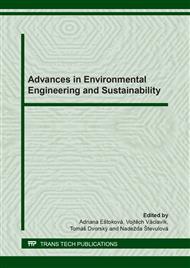p.81
p.88
p.94
p.103
p.111
p.118
p.125
p.135
p.143
Influence of Humidy on Radon Volume Activity on Lands
Abstract:
The research is primarily focused on the determination of humidity on radon volume activity in different soil gas permeabilities in a given land. The research also included the detrermination of the radon index in the given land. The mean concentrations of radon in soil gas during the drought ranged from 15.9 - 24.1 kBq/m3 and in the precipitation period 16.3 - 26.7 kBq/m3. The first area was characterized by low gas permeability of soils, where a low radon index was determined during the dry season and a medium radon index was determined in the precipitation period. The second area, the medium gas permeability of the soils was determined from the analysis of the collected soil samples. The values of the third quartile in both cases measurements of radon volume activity in soil gas fall into the middle class of radon index. The third location would be determined by high gas permeability of soils. The radon index of the given land during the drought was determined as the medium, as in the case of measurement of radon volume activity in soil gas in the period with added moisture in the soil profile. The analysis confirmed the effect of moisture on the volume activity of radon.
Info:
Periodical:
Pages:
111-117
Citation:
Online since:
April 2020
Authors:
Keywords:
Price:
Сopyright:
© 2020 Trans Tech Publications Ltd. All Rights Reserved
Share:
Citation:


